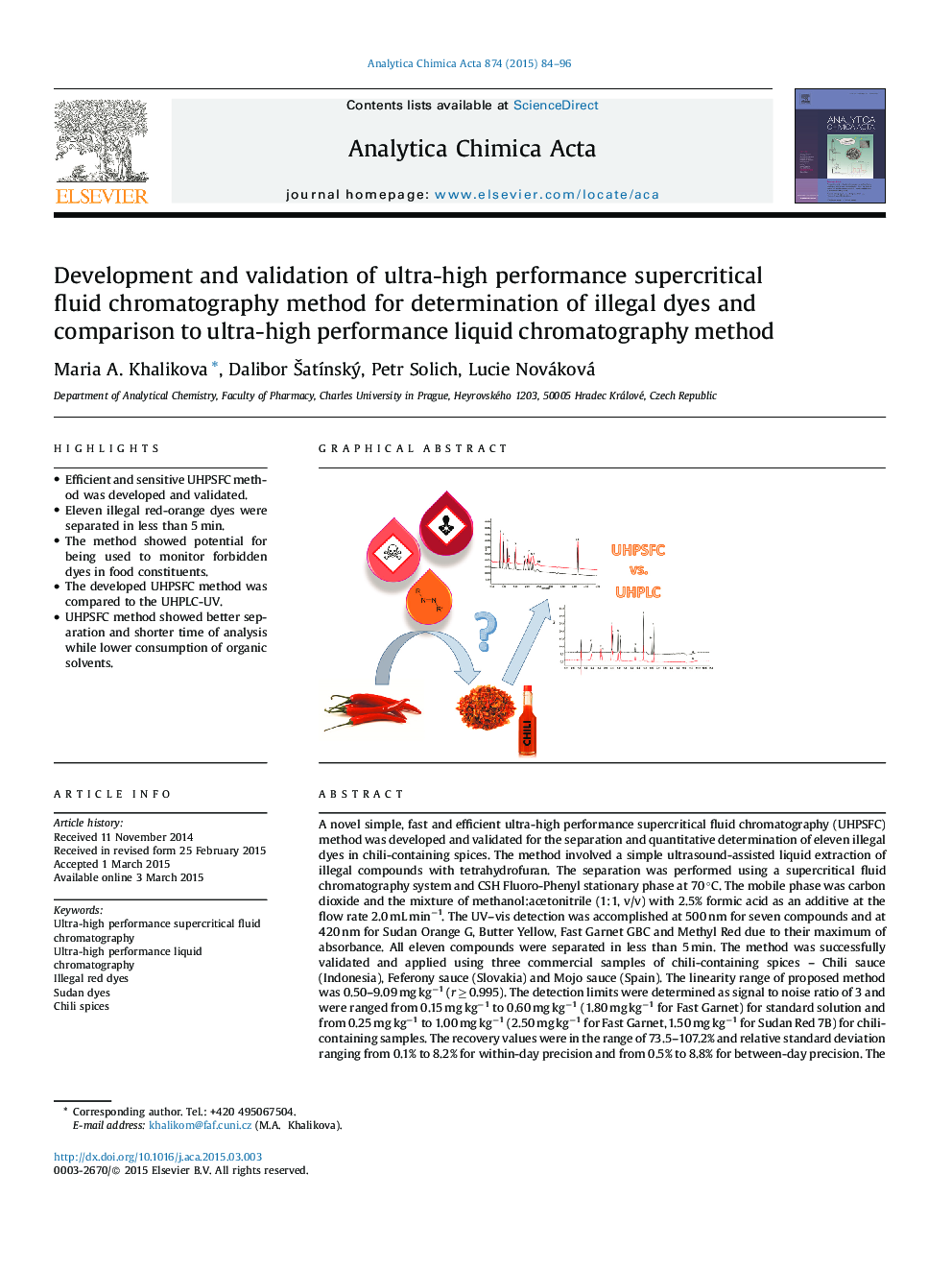| کد مقاله | کد نشریه | سال انتشار | مقاله انگلیسی | نسخه تمام متن |
|---|---|---|---|---|
| 1163355 | 1490958 | 2015 | 13 صفحه PDF | دانلود رایگان |
• Efficient and sensitive UHPSFC method was developed and validated.
• Eleven illegal red-orange dyes were separated in less than 5 min.
• The method showed potential for being used to monitor forbidden dyes in food constituents.
• The developed UHPSFC method was compared to the UHPLC-UV.
• UHPSFC method showed better separation and shorter time of analysis while lower consumption of organic solvents.
A novel simple, fast and efficient ultra-high performance supercritical fluid chromatography (UHPSFC) method was developed and validated for the separation and quantitative determination of eleven illegal dyes in chili-containing spices. The method involved a simple ultrasound-assisted liquid extraction of illegal compounds with tetrahydrofuran. The separation was performed using a supercritical fluid chromatography system and CSH Fluoro-Phenyl stationary phase at 70 °C. The mobile phase was carbon dioxide and the mixture of methanol:acetonitrile (1:1, v/v) with 2.5% formic acid as an additive at the flow rate 2.0 mL min−1. The UV–vis detection was accomplished at 500 nm for seven compounds and at 420 nm for Sudan Orange G, Butter Yellow, Fast Garnet GBC and Methyl Red due to their maximum of absorbance. All eleven compounds were separated in less than 5 min. The method was successfully validated and applied using three commercial samples of chili-containing spices – Chili sauce (Indonesia), Feferony sauce (Slovakia) and Mojo sauce (Spain). The linearity range of proposed method was 0.50–9.09 mg kg−1 (r ≥ 0.995). The detection limits were determined as signal to noise ratio of 3 and were ranged from 0.15 mg kg−1 to 0.60 mg kg−1 (1.80 mg kg−1 for Fast Garnet) for standard solution and from 0.25 mg kg−1 to 1.00 mg kg−1 (2.50 mg kg−1 for Fast Garnet, 1.50 mg kg−1 for Sudan Red 7B) for chili-containing samples. The recovery values were in the range of 73.5–107.2% and relative standard deviation ranging from 0.1% to 8.2% for within-day precision and from 0.5% to 8.8% for between-day precision. The method showed potential for being used to monitor forbidden dyes in food constituents. The developed UHPSFC method was compared to the UHPLC-UV method. The orthogonality of Sudan dyes separation by these two methods was demonstrated. Benefits and drawbacks were discussed showing the reliability of both methods for monitoring of studied illegal dyes in real food constituents.
Figure optionsDownload as PowerPoint slide
Journal: Analytica Chimica Acta - Volume 874, 18 May 2015, Pages 84–96
